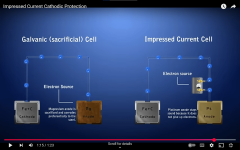Adding MasterTemp 400 heater to intelliconnect
- By uscshawn
- Pumps, Filters, and Plumbing
- 7 Replies
No. Not through the app. Pool guy was able o turn it on bypassing the intelliconnect.Your heater working now?
No. Not through the app. Pool guy was able o turn it on bypassing the intelliconnect.Your heater working now?
I didn’t know the rougher surface is better for the plaster to adhere, that’s good to know and makes me feel better. Thank you so much for your input, it’s just too easy to freak out during this process.Well … you didn’t get their varsity team doing the shoot, that’s for sure. But otherwise, looks aren’t important for gunite. What’s important is that the rebar and plumbing was properly done and that the cement mix used was correctly spec’d and delivered on time. The plaster crew is going to be the ones that do all the final detail work and the plaster is thick enough to smooth out all that roughness. But, in reality, the rougher surface is actually better for plaster adhesion than a smooth surface. So as long as the plaster crew is competent, your pool should look great when it’s done.
It will make having a pool soooo much better and easier!!! Good luck with your new pool and enjoy!!We will more than likely be switching over to salt water next year
Skip it, it never works. I would even consider other options.@Tranma any update on the wifi? I will be purchasing a gulfstream HP soon, wondering if I should pass on the wifi controller, if its not working.



Thank you for your feedback! I really appreciate it.It looks mostly ok.
Plaster will probably make it look good.
A properly fitted union, with a proper, in good condition o-ring should be hand tightened.
- Use the right tool. A belt wrench is perfect. Use one like this that has gripping tread on the inside of the belt:
We will more than likely be switching over to salt water next yearTim,
You have questions and we have plenty of people with the answers...
It is a Win.. Win..
Good job on getting the best test kit out there!!!
Can't believe you did not go with a saltwater pool in your location???
Thanks,
Jim R.



